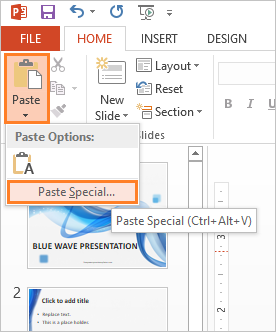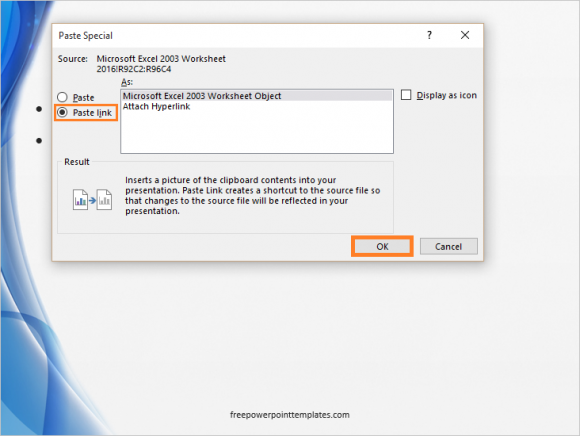Excel has remained the tool of choice for many years when it comes to financial calculations. Many people use it to keep track of their numbers everyday. Even though many people use it for calculations, you still shouldn’t use spreadsheets in a presentation. Even though spreadsheets can be copied to and edited from PowerPoint, presenting a spreadsheet does not work well with audiences. Having said that, not using data from Excel is not an option. So, lets see how we can share information from Excel in PowerPoint more effectively.
Don’t Copy Spreadsheets at All?
You’re not supposed to copy spreadsheets and paste them directly into PowerPoint. But, you can make a summary based on the analysis you’re going to do in the presentation. In your analysis you might answer an important question that your audiences wants to know about. Basically, you only copy the stuff that you really need to share, and leave everything else out.
What Your Audience Does Not Want to See
Your audience does not want to see a lot of numbers that they do not understand. They only want to know information relevant to the presentation. Presenting more information than they need to know can distract and confuse the audience.
To Link or Not To Link
It might seem simple to just copy data from an Excel sheet to a PowerPoint slide, but you may have noticed that you have more than one option to do so. Different paste options have different effects. This has led some people to accidentally copy more than they intended, resulting in calculation formula being copied with Excel tables, and tables being copied with charts, etc. This can be a problem if you intend to send copies of the presentation through a mailing list.
Normal Copy Methods
If you copy and paste the table from Excel to PowerPoint using the keyboard shortcut Ctrl+C and then Ctrl+V, then you will have simply copied the table into PowerPoint without any link to the source.
You normally have the option to insert the table as plain text, destination formatting, or source formatting. This only changes the appearance of the table. In PowerPoint 2013, you also have the option to paste the picture of the table to ensure that your calculations are secure. But, you can also use the Embed option to embed the table and edit it as if it were in Excel. All of these methods basically copy the data and have no link to the source Excel file.
Linking an Excel Sheet in PowerPoint 2013
If you link an Excel sheet using Paste Special, then you can actually see any changes made to the Excel sheet in PowerPoint. Using the Paste Special feature to link an Excel sheet is a bit different in different versions of PowerPoint. In some versions, you see a button that appears as soon as you copy.
In PowerPoint 2013, you need to click the Home tab on the ribbon, and click the Down Arrow below the Paste button. Then, click Paste Special.
(Please click here to download the PowerPoint template used in this example)

Make sure to click the Paste link radio button, and then click OK

(Please click here to download the PowerPoint Template used in this example)
Now, every change made in the source Excel sheet should also appear in the PowerPoint slide.

Leave a Reply